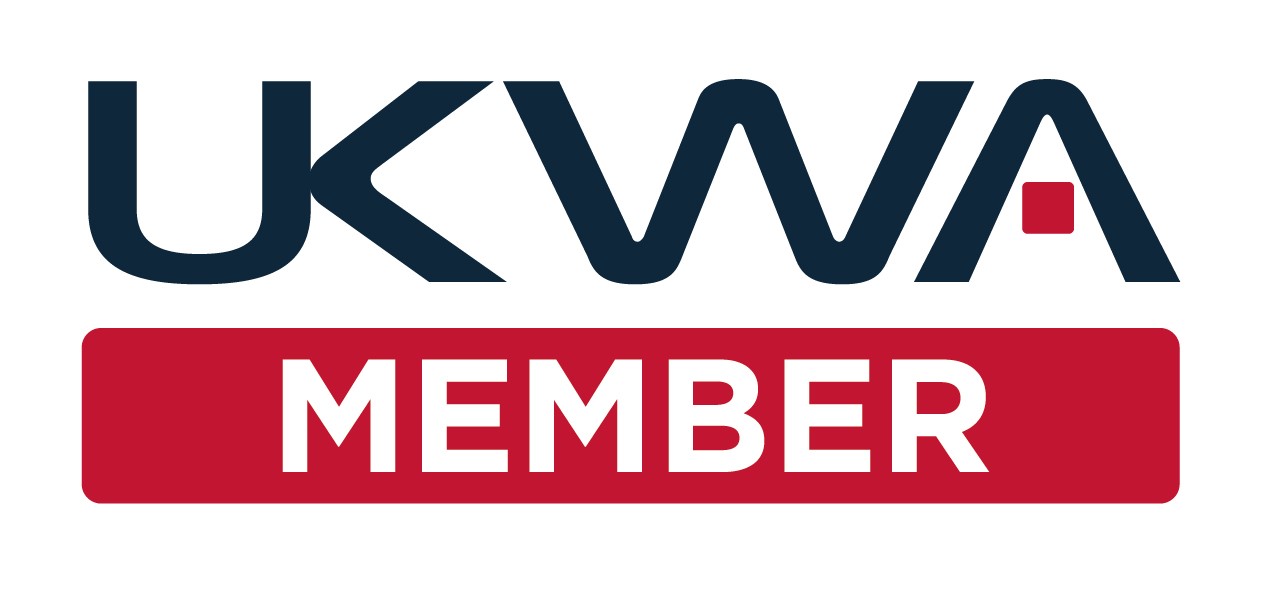Stafford Lynch Achieves 95% Stock Accuracy Boost
Stafford Lynch Achieves 95% Stock Accuracy Boost
WMS Software Delivers Transparency, Traceability & Compliance for 3PL Distribution Multi-Brand Manager
 Stafford Lynch is one of Ireland’s leading providers of distribution services for third party manufacturers. Established in 1974, the company’s successful portfolio of market leading brands reflects 44 years of brand building experience.
Stafford Lynch is one of Ireland’s leading providers of distribution services for third party manufacturers. Established in 1974, the company’s successful portfolio of market leading brands reflects 44 years of brand building experience.
Automating Ireland’s Leading 3PL Distribution Multi Brand Manager
-
A source-to-shelf business operating across food, drinks, homeware and consumer healthcare
-
Dublin-based 86,000 sq. ft distribution centre serving over 2,500 accounts across Ireland
-
Capacity for over 10,000 pallets in single and double racking up to 15m
-
600+ orders and 83,000 cases weekly. Peak traffic reaching 110,000+ cases during busy periods
The Stafford Lynch distribution centre, is an 86,000 sq. ft purpose-built facility located in Blanchardstown, Dublin. It serves the customer base of over 2,500 accounts across Ireland with capacity for over 10,000 pallets in single and double racking up to 15 metres high. Goods movements were running at about 600 orders and 83,000 cases per week, with peak traffic reaching over 110,000 cases in the pre-Christmas period.
Brands managed include: Baxters, Dr. Dr.Oetker, Energizer, PZ Cussons,
San Pellegrino, Schwartz, Tabasco, Tetley, Walkers and Wilkinson Sword
Stafford Lynch’s services to its principals and their joint customers are managed by five operating divisions, each with a unique structure and operation satisfying specific market sectors. The retail division, for example, serves the multiples’ retail outlets and symbol groups, garage forecourts and independent wholesalers and cash and carry. These handle ambient dry grocery, including confectionery and condiments, beverages and snack foods, ethnic foods and a range of healthcare, pharmaceutical and baby care products.
Warehouse Management Software for 3PL Distribution: Challenge & Situation
Stafford Lynch needed a fully joined up WMS Warehouse Management System so any chosen solution needed to seamlessly integrate with its in-house Microsoft Navision ERP platform as the software for its handheld scanners in use in the warehouse, and by the delivery drivers.
The company’s mission critical task is to track and account for the hundreds of thousands of items passing through the supply chain and received into, stored in and despatched from, its central distribution centre.
In addition to logistics and warehousing, the business must manage over 2,500 customer and 35 major principal accounts, and ensure compliance with all relevant food and healthcare product regulations. The Health Products Regulatory Authority (HPRA) has a strict regulatory regime for all healthcare products, including over the counter items. The company must also satisfy all of its principals as to the integrity of the supply chain. There must be robust transparency and traceability to support their regulatory compliance, where mandatory or agreed best practice is required.

Stafford Lynch uses a Microsoft Navision based ERP system. This controls the sales order processing and aspects of order fulfilment and related financial administration as elements of the overall ERP systems, with specialist solutions in the warehouse and for the handheld wireless devices.
Stafford Lynch: Situation
-
No dedicated Warehouse Management System and an existing ERP system requiring integration.
-
A requirement to keep track of hundreds of thousands of items passing along the supply chain.
-
A business-critical need to ensure full product compliance, including food & healthcare related.
-
The complexities of managing 2,500 + customer & 35 principals’ accounts while ensuring complete transparency and traceability.
“We aim to manage our businesses from source to shelf, applying the specialist expertise developed over more than three decades to every part of the process. That includes continual development of our support operations, including information technology and communication systems across procurement, logistics and warehousing, particularly detailed inventory management and the general business functions of sales, marketing and finance.“
Paddy Lonergan, Stafford Lynch
WMS Warehouse Management Software for 3PL Distribution: Solution
 There were several factors behind the decision to invest in a specialised WMS Warehouse Management System. Stafford Lynch’s growing business had no dedicated WMS, so sales orders generated via its Microsoft Navision based ERP system were printed out and then manually assembled for despatch. This was inefficient and made it difficult to comply effectively with the mandated traceability and regulatory compliance for the many food and healthcare products that are key elements of the business. Clearly, the business needed a fully joined up system.
There were several factors behind the decision to invest in a specialised WMS Warehouse Management System. Stafford Lynch’s growing business had no dedicated WMS, so sales orders generated via its Microsoft Navision based ERP system were printed out and then manually assembled for despatch. This was inefficient and made it difficult to comply effectively with the mandated traceability and regulatory compliance for the many food and healthcare products that are key elements of the business. Clearly, the business needed a fully joined up system.
ProWMS Warehouse Management Software: the right choice. Any WMS had to integrate with Microsoft Navision and the handheld scanner software in use in the warehouse and by the delivery drivers. Having previous experience of Principal Logistics Technologies’ solutions, the company has high confidence as to ProWMS’s robustness, performance and flexibility. It was, however, important that ProWMS Warehouse Management Software could cope with the more sophisticated requirements of the extended product range. Stafford Lynch had a contract with a new principal coming online which required a high level of product traceability. This was a key driver in the final choice.
Stock rotation control was an important consideration. Apart from the traditional first-in, first-out element, about 75% of the products have best before and sell by dates needing strict observance. Most have relatively long shelf lives, but some, like crisps, have shorter periods, which potentially makes the control of aged stock more difficult. In addition, product returns are a major feature of the business and accounting for them, including decisions such as uplifting back into warehouse stock or disposal, is a key element both of inventory management and traceability and of customer credits in the financial system.
 System specification and ‘go-live’ in just four months: Initially, all goods inwards were taken into the Warehouse Management System by labelling the pallets with unique barcode identifiers. After a few weeks, most of the warehouse stock was already labelled and a one-off manual exercise was undertaken to complete the labelling of all pallets in store. At that point the replenishment functionality was activated and warehouse staff were trained on the system using wireless handheld terminals.
System specification and ‘go-live’ in just four months: Initially, all goods inwards were taken into the Warehouse Management System by labelling the pallets with unique barcode identifiers. After a few weeks, most of the warehouse stock was already labelled and a one-off manual exercise was undertaken to complete the labelling of all pallets in store. At that point the replenishment functionality was activated and warehouse staff were trained on the system using wireless handheld terminals.
Training process: This included the pickers becoming accustomed to following the picklist rules in assembling orders. These include, for example, a feature which means that a more conveniently located pallet cannot be substituted for what is specified by the system, hence ensuring consistent rotation. Warehouse picking is done via motorised pallet trucks, taking from the central pick face bays containing various categories of product. A separate team replenishes the bays as required when the system monitors stock falling below certain trigger levels.
ProWMS Software controls the stock levels and replenishment, the order assembly pick lists on the handheld terminals, and a range of information relative to each order such as customer and specific store, sales rep, carrier, picker and date and time stamps. Each pick list incorporates best routing according to preset rules, optimising location order and also ensuring that fragile items are loaded towards the end of the list. Out in the field, the core reps and delivery staff also work with handheld devices, which have built-in GSM data communications to link back to the headquarter systems. Order taking is straightforward, feeding directly into the sales order processing system.
“Where our smart systems come into their own is in dealing with the many exception types that occur in this business every day. Short orders happen at our goods inwards point while in our own deliveries they are now uncommon but do happen. Returns are a regular feature, including rejection at the delivery site because, for example, the customer decides something is too close to its best before date. Other events include transit or packaging damage. The important element is the automated and accurate handling of these exceptions so that returned goods can be checked and appropriately accounted for, down to case level and below.”
Paddy Lonergan, Stafford Lynch
Proof of delivery and returns monitoring: Events are recorded on the handheld devices and transmitted back to ProWMS. These often involve third-party delivery contractors which generally have a five-day window to return the goods. This is monitored by ProWMS and notices, or alerts, are raised when procedures are not adhered to, including reminders to the hauliers of what they should be returning. A dedicated returns function monitors all such activity, including inspection and re-labelling, or re-categorising, of goods. In this way the company provides complete visibility of all returns to customers and principals.
Comprehensive stock tracking and quarantine: A somewhat similar function monitors product shelf-life in the warehouse. All stock at 30 days remaining shelf-life is removed from available status and quarantined. Some products may then be appropriate for special customer deals, others will be marked for disposal. The key point about returns, and other exceptions, is that all order fulfilment is fully tracked and never allowed to lapse due to the kinds of one-off occurrences that are inevitable in distribution.
‘Anchor merchant’ management: Stafford Lynch has some unique internal structures, for example, anchor merchants which are effectively internal units, like van sales, for administrative purposes. These have small stores of their own which draw down each week from the central warehouse as replenishment orders. When an order is delivered or released to retail, the barcode scan automatically decrements the stock position in the store and the warehouse. This aspect of the system was specifically tailored to the Schwartz distribution and merchandising operation.
WMS and ERP, fully integrated: Stafford Lynch was left with a proven set of systems covering all aspects of its business operations. Microsoft Navision, its core ERP platform seamlessly integrates with ProWMS effectively acting as the glue between a fully integrated central warehouse and inventory management system. The warehouse handheld devices and the GSM-enabled units used by staff in the field use barcode scanning and messaging software which has been set up to interface directly with ProWMS.
A final word from a satisfied customer!
“Before installing the WMS we reckoned our service levels were operating at a high-level of 88-90%. But monitoring of our KPIs reported 99.5% accuracy. That is, in fact, now the performance level on a regular basis. The business can see its stock levels accurately all the time and in real-time, which in turn facilitates the efficiency of the procurement team. Similarly, the accurate stock movement records underpin the company’s demand planning model. The business objectives have been consistently attained, notably in efficiency and accuracy of all of our administration. We have a robust ICT platform for growth or diversification. Equally if not more important is that we have been enabled to raise the quality of our customer service to, we believe, a world class level.”
Paddy Lonergan, Stafford Lynch
 “Stafford Lynch now has a proven set of robust and efficient systems for all aspects of its business operations. Microsoft Navision is the core ERP platform with the ProWMS Warehouse Management System effectively acting as the glue between a fully integrated central warehouse and the inventory management system.”
“Stafford Lynch now has a proven set of robust and efficient systems for all aspects of its business operations. Microsoft Navision is the core ERP platform with the ProWMS Warehouse Management System effectively acting as the glue between a fully integrated central warehouse and the inventory management system.”
Joe O’Shea, Principal Logistics Technologies
Next Article
Stock Traceability Boost for Ornua FoodsWe'll assume you're OK with this, but you can opt-out if you wish.Accept Reject Read More






